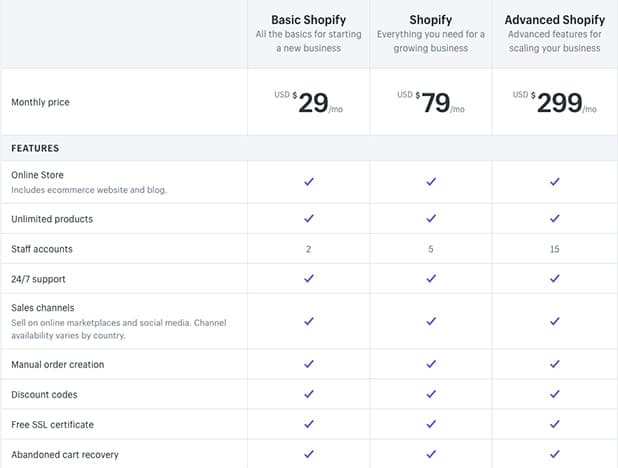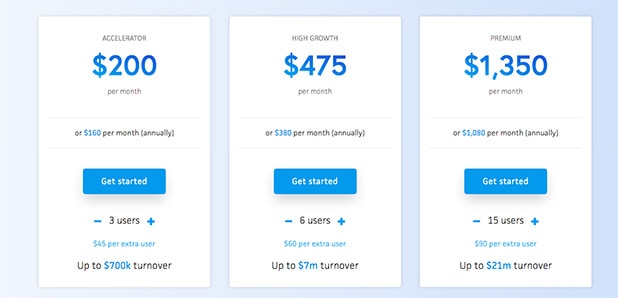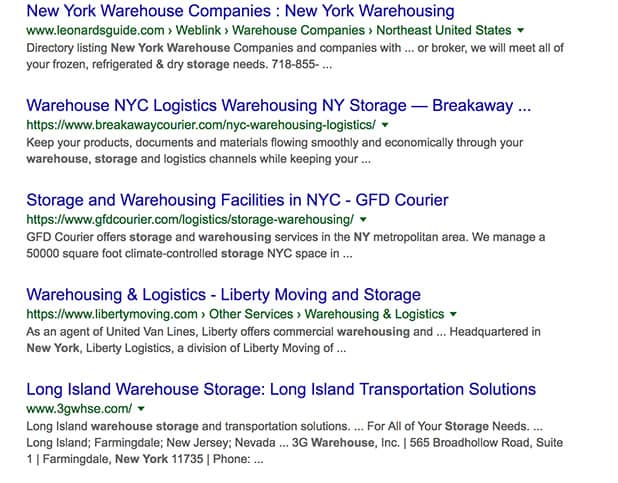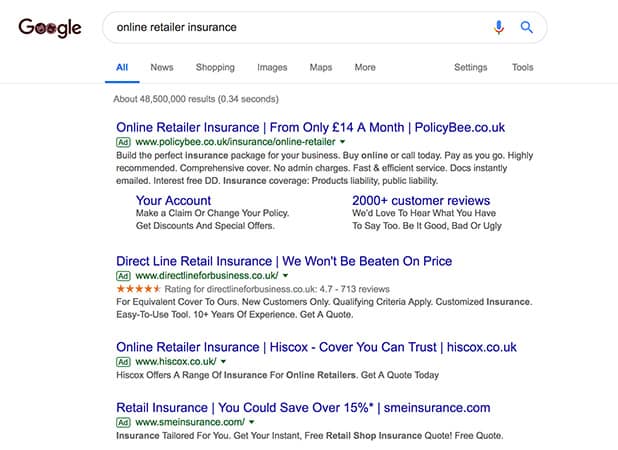You’re yet to start your e-commerce business, but why?
Could it be that there’s a voice in the back of your mind telling you it’ll be too expensive?
I know the feeling.
You read articles about other e-commerce stores successes and want that for yourself.
You have ideas about how your store will look, what products you’ll have, and even perhaps know what the store will be called.
But at the end of the day, these things cost money.
This post is going to outline any/all e-commerce business expenses you’ll need to factor in when you’re just starting your store, when you’ve launched your store and when you’re established.
As with everything, you get in what you put out.
Some of the things on the list are mandatory, and some are optional.
What you choose to spend depends largely on what you hope to achieve with your store and your budget.
With this post, though, you’ll have a clear idea of all the potential costs.
Starting out with the e-commerce business expenses
Before you officially launch your store you need to make some decisions as to how it’ll run. These decisions will affect the amount of money you need to invest. If you decide to use a dropshipping strategy then you won’t need to pay to store your products. Likewise, if you use Amazon FBA you won’t need to think about shipping as it’s handled internally by Amazon. We’ll touch on both of these later.
Hosting
You’ve got your store, but where will it live. Just like you would a brick-and-mortar store, you need to put your products somewhere people can find them. You have a number of options here:
- Use an e-commerce platform like Shopify (free for 14 days then $29 a month) for their basic plan.

- You could host the store on your own website and use the WooCommerce plugin to turn your website into a store. WooCommerce is free but has a range of paid extensions you can buy to make the platform work better for you.

- Or you can use a bespoke solution and have your e-commerce hardcoded from scratch. If you’re just starting out, it’s best to avoid this solution. It works out to be the most expensive option and you’re not guaranteed to actually make any sales. Best advice would be to use one of the packaged systems and when you’ve scaled the business and proved there is a need for your product, consider building a bespoke solution.
Inventory
If you’re storing your products in your house or in a warehouse, you’ll want to keep track of how much inventory you have.
After all, you don’t want your customers to purchase items from your store that aren’t in stock – simply because you forgot to update it.
Our friends at Veeqo have an inventory management software you can use to keep track of all your products, and that’ll help in calculating your e-commerce business expenses accurately.

As you can imagine the pricing largely depends on how big your store is.
Shipping
When it comes to getting your products into your customer’s hands, you have to think about shipping.
Some stores like to offer store-wide free shipping.

This is great to generate more sales, but it does mean that you have to pay for shipping.
Some stores offer free shipping after the customer spends a certain amount.
This is effective for increasing your average order value but do keep in mind that you still have to cover those shipping costs.
And if you plan to sell internationally, this can soon add up.
Returns & refunds
What if a customer doesn’t like their product? What if that same customer complains about their product and wants their money back?
As an e-commerce owner, it’s your right to refund your customers who received a low-quality product from you.
But what this means is you’ve lost that item and you’ve lost the money the customer spent.
What’s more, what many e-commerce store owners do out of good faith is refund the money but also replace the item.
So in these situations, you’ve lost the cost of two items plus the initial customer spend.
In an ideal world, all your products would be completely satisfactory and no one would request a refund, however that’s not what usually happens so try to factor in the cost of customer refunds.
Marketing
How do you expect people to know about your store or your products if you don’t find a way to tell them about it.
Sure, you can tell your friends and family about your new venture, but it’s unlikely that’ll be enough to sustain your business.
This is where advertising and marketing comes in. There are numerous ways you can advertise your new e-commerce store, but make sure that the method you pick comes across as authentic and not too sales-y.
Get active on social media (free – just needs your time). Connect with your target customers in relevant communities and if you have the budget for it this early on, why not see if you can experiment with some paid ads.
Design
No matter where you decide to host your e-commerce store, some thought should be had for design.
If you’re using Shopify to host your store, you’ll be able to use one of the many free templates.
However, if you want a premium theme, you’ll need to pay, or alternatively, if you have the skills you can design your own.
You also might want to think about branding. Perhaps you want all your products to have the same or similar packaging.
This will all incur extra costs – even if you do the designs yourself, you’ll still have to find a way to get them int he individual packages.
Payment Gateway
When you start your e-commerce store you need to think about how you’ll accept payments. It should come as no surprise that your payments should be online, therefore you’ll need to use a payment gateway.
This way you’ll allow safe transfers to land in your bank.
The issue is most payment gateways come with fees.
This means that for every $ you earn, they’ll take a percentage. Research which payment gateways are in your country and see which you want to employ in your store.
It’s good to note that offering a range of payment methods will increase the likelihood of a sale.
If you only accept credit cards but your customer wants to pay with their Paypal, what do you think they will do?
Find another vendor, that’s what.
For help, check out:
- Paypal
- Payu
- Amazon Payments
- Authorize.net
- Skrill
- 2 checkout
- Stripe
- Orange pay
- Blue snap
SSL certificate
Every e-commerce store needs an SSL certificate. An SSL certificate stands for secure sockets layer and effectively keeps any sensitive information from your visitor safe.
The reason you need one is that you’re requesting that your customers enter their card details.
They want the peace of mind that when they do enter their card details, their details will be safe and secure.
SSL certificates come at a range of different prices. In most cases, you’ll be able to purchase it from your hosting provider. They’ll also be able to install it onto your website too. Overall, authorizing and authenticating your website is the first step for gaining the users’ trust whether it is done with a jwt authentication or any other standard.
Launched your store
So you’ve launched your store, you’re making sales, you’ve spent a little bit of money, but now what? Are there other factors you should consider? Yes. Let’s look at those now.
Storage
You might’ve started your store using the dropshipping method. You know that this method is effective when you want to test out winning products without the fear of them not working out or having to store excess inventory.
However, you might be at the stage where you’ve found a product customers are loving but you want to improve it and manufacturer your own.
Alongside the manufacturing costs, you need to think about where you’re going to store them.
A simple google search of “warehouse storage + your location” will let you know what you have available in your area.

It is sometimes cheaper to find a storage facility away from where you live, however, the downside to this is you’re less likely to have time to go and visit it if you need to.
Insurance
When you’re just starting up your store, the first thing you probably think of is just getting it ready and making a sale.
Once you’ve got a bit of traction though, you might want to think to the future and protect yourself.
That’s why insurance comes into play.
Say, for example, you sell electrical goods. What is one of those products explodes after a customer has bought it?
You don’t want a lawsuit on your hands, so do some research and find cost-effective insurance that works for you.

If you search for “online retailer insurance” you’ll find a range of different offers, some local some national.
Try to speak with as many people as possible, explain your business model, what you’re selling etc and then pick one that works well for you.
When it comes to insurance, you need to look closely as to what you’re covered for. In most cases, cheap doesn’t always mean better. So don’t shoot yourself in the foot by trying to find the cheapest insurance you can.
One of the most important e-commerce business expenses, taxes
If you’ve not made a penny from your store, you don’t need to think about taxes, but if you’ve made some money, it’s something that should be considered.
You might want to register your store as an actual business through a qualified registered agent in order to pay your taxes through that, or you might simply want to register as a sole trader.
Regardless of what system you use, make sure that you’ve followed the correct procedure for your district and be 100% transparent about what you’ve earned.
It’ll be better in the long run as the last thing you want is HMRC or IRS coming to you for unpaid tax.
Established e-commerce business expenses
When your store is established and you have everything working as it should be, it’s time to start scaling.
Yes, you’re making money now, but if you were to invest further into your business, imagine how much you could make then?
Salaries
If you hire support or help, you need to factor in the cost of their salaries. People tend to not work for free and need to be compensated for the work they do.
If you’re hiring full-time make sure you get advice from an accountant who can help you set up pension schemes and paid time off.
If you’re hiring freelancers or contractors, make sure you get them to invoice you so you can track your staffing spend and take it off the total tax amount.
Scale one of the biggest e-commerce business expenses, advertising
If you’ve experimented with paid advertising, it’s likely you had a small budget. Now that you know your winning products and what compels someone to buy, it’s crucial you up your ad spend so as to attract more people.
You could even go as far as to hire someone to help you take interesting images and effective videos.
The more you invest in your business at this stage, the higher the chance it’ll be that you’ll scale faster.
But again, scaling your advertising becomes expensive. So make sure you’ve looked at the cost of acquiring a customer and check that it’s lower than the total average spend
Legal support
We’ve already mentioned that you should get insurance to make sure you’ve never liable for anything that goes wrong.
But once your store is established, you should look at hiring a legal entity to help you if something does go wrong.
Granted, legal teams are expensive and are only worthwhile once your store is making significant revenue, but you’ll thank yourself later if something bad happens and you’ve already made a relationship with the people who are going to help sort it out.
Wrapping up the e-commerce business expenses
By now, you should understand the costs that go into setting up and running an e-commerce store.
Arguably, there are no fixed costs for each simply because you can spend as much or as little as you want.
If you want to set an ad budget for $50 a month, then you can do that and scale as you grow.
Alternatively, if you want to set a $5000 a month budget, you can do that too.
This post isn’t here to give hard and fast prices, but to alert you to the range of things you need to think about.
We hope you’ve used this guide and now you’re ready and equipped to start your e-commerce store.
e-commerce finances


Hi there, of course this piece of writing is genuinely good and I have learned lot
of things from it regarding blogging. thanks.
Very informative blog about eCommerce business expenses. Thanks Jordie, for guiding us before one starts a business. This will benefit many business people.